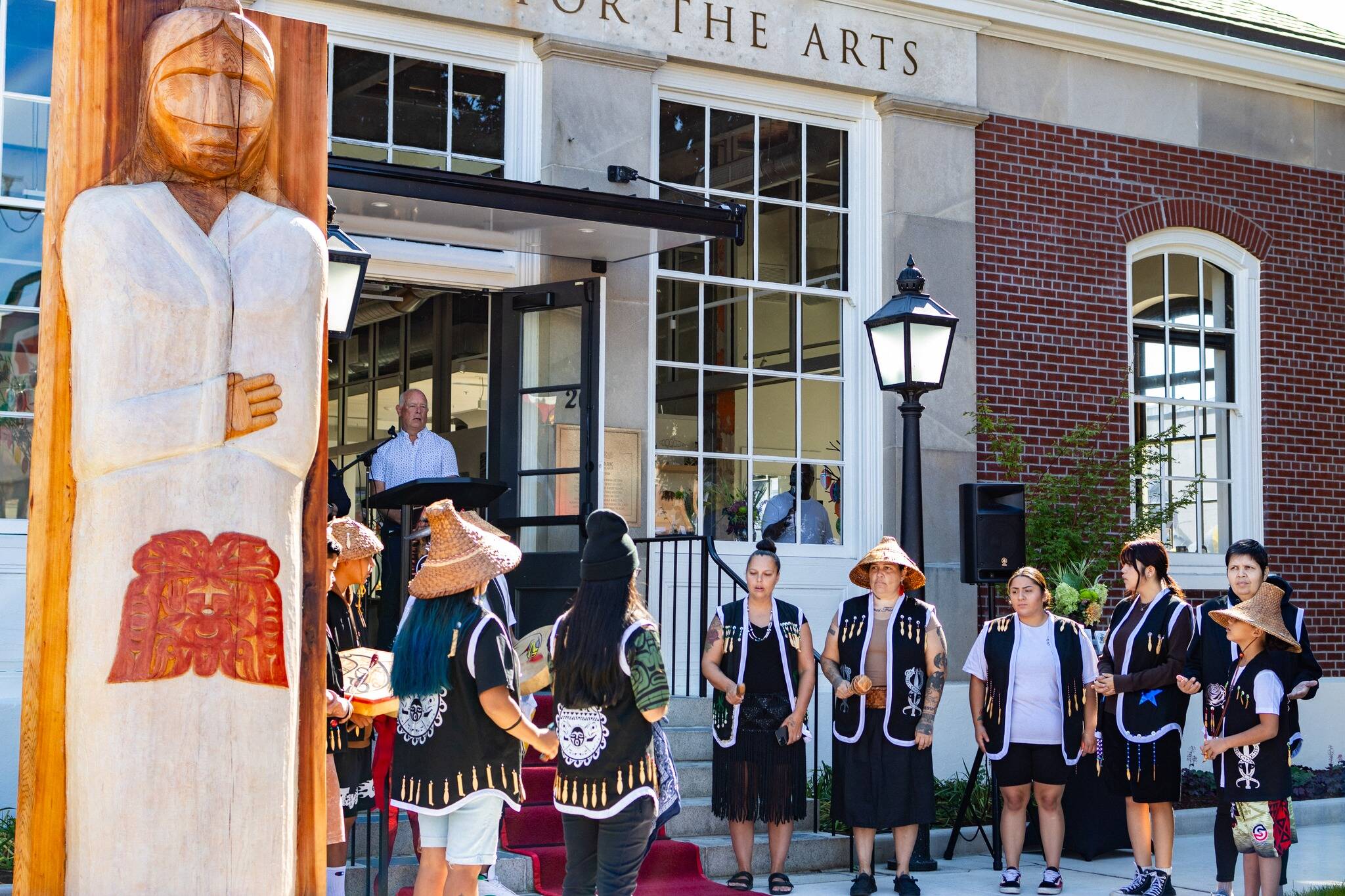They came in droves Saturday, Sept. 16, to the grand opening of Auburn’s new arts and culture center.
And it did not disappoint.
So radical has been the transformation from the old Auburn Post Office and later public Health Building into the Postmark Center for the Arts that even people who could recall the gloomy interior of yesteryear struggled to orient themselves in the bright light streaming in from high windows once covered up by a suspended ceiling.
“I think this is where the counter was … I’m not sure, but I think got my first shots right over there …” could be heard in passing.
Marge Gordon of Auburn, who once administered those shots, could hardly contain her enthusiasm.
“Oh, they did a marvelous job,” Gordon said. “From the windows to the cabinetry, just…everything.”
“It’s about damn time, and this is from people who grew up here,” said Virginia Haugen, quoting what she’d heard from members of old, established Auburn families just then milling about. “We’ve wanted a historic landmark in this town that people grew up with and remember, and we waited a long time. It is magnificent.”
The big event drew scores of dignitaries to gawk alongside everyone else.
Former Auburn Mayor Pete Lewis recalled that negotiations with King County Executive Dow Constantine for the building began way back in 2004.
“The ideas that we had for the building then were pitiful compared to the ones they actually came up with,” Lewis said. “And the only thing I wanted them to do they did – light up the cupola.”
As the new hub for the arts and for community gatherings in downtown, city officials said, they expect the Postmark Center for the Arts to crackle with energy, and make the downtown into the sort of place where people will want to be.
“The new Postmark Center for the Arts will provide increased access to the arts and cultural education to the local and regional community,” Auburn Mayor Nancy Backus told the crowd before the doors opened, adding that “it will also drive economic activities in Auburn’s downtown core.”
Renovated lobby space and multi-purpose rooms will offer new public programs, music and dance performances, visual art exhibits, literary art events and other cultural gatherings,perhaps some lovely chamber music, with space available for rent for special events, parties and small performances, Backus said.
The ultimate goal, Backus said, is to “make the economic, educational, cultural and civil benefits of the arts available to all communities by broadening public access to the arts.”
In front of the building is a carved Muckleshoot welcoming figure, a man in a robe with a traditional Salish design of the type often used at longhouses to welcome neighboring tribes, a goodwill gesture to the city and its residents from the tribe on whose ancestral lands the center stands.
Here’s what they saw
While phase 1 of the project centered on the lobby, the roof and the cupola, here’s a bit of the big picture.
Studio space, to include a visiting artist, from whom locals can take classes and watch work.
Public programming throughout the year, to include free events for the community, like lectures, artists’ talks and small-scale performances and eve replete with gallery spaces and places for artists to take classes and work, they said.
Partnerships with local organizations and the Auburn School District to create after-school classes and programs.
Rental space of a large gallery for gatherings.
A small gift shop and store where artists can sell their creations.
Rotating exhibitions in the main floor gallery space and a small, independent gallery space called The Vault, which will use the original post office vault.
A small cafe for catering and events.
Small grants allowed the city to fix the windows, said Auburn Parks and Recreation Director Daryl Faber, but as a historic building, every bit of work on the outside had to meet approval of the county’s historic landmarks commission.
“4 Culture –King County’s arts arm,” Faber said, “has been warmly supportive of what the city has done over the years in terms of the performing arts and building renovation.”
Built in 1937 and funded in part by the Depression-era Works Progress Administration program, the building officially opened in 1938 as a United States Post Office, which it remained until 1963, when the federal government built a newer, larger post office a few blocks to the west.
In 1964, the King County Health Department bought the vacant building and operated it as a public clinic until 2009. After years of negotiations with King County, the city of Auburn finally closed on the acquisition in 2016, and ever since then has been working on the design and raising money for the project.
Preliminary to any work on the project, the city hosted community meetings to percolate ideas, then it went to town with old drawings from 1937 to see what parts of the building could be saved. Among those parts were the original terrazzo floor and the original windows, tricked out with old-timey pull chains.
Once workers had removed the suspended ceiling, Faber said, they found the original, cedar plank ceiling, and with the suspended ceiling out of there, the gloom lifted, and the building suddenly took on a much more cheerful mood. And when workers removed the cramped quarters where the health clinic’s nurses worked, Faber continued, the entire building lit up.
Here’s where some of the money came from:
4Culture Building for Culture: 2016-2019 for Schematic designs, irrigation & phase 1 interior demolition: $200,000
4Culture preservation special projects: 2017-2018 for architectural services and planning design: $10,000
4Culture landmarks capital 2017-2018 for historic window restoration: $10,000
4Culture Arts facilities grant 2017: $90,000
Multicare grant: $15,000
4Culture building for equity arts facilities grant 2019: $50,000
State of Washington Dept. of Commerce 2019: $490,000
4Culture Landmarks Capital: 2019 for wood floor and terrazzo flooring rehabilitation: $23,000
4Culture preservation emergency and unforeseen: 2020 cupola rehabilitation: $10,000.


